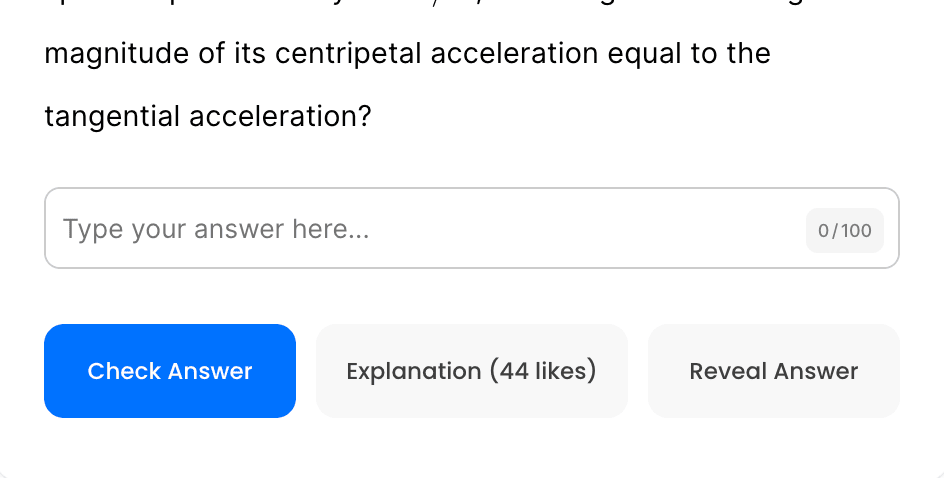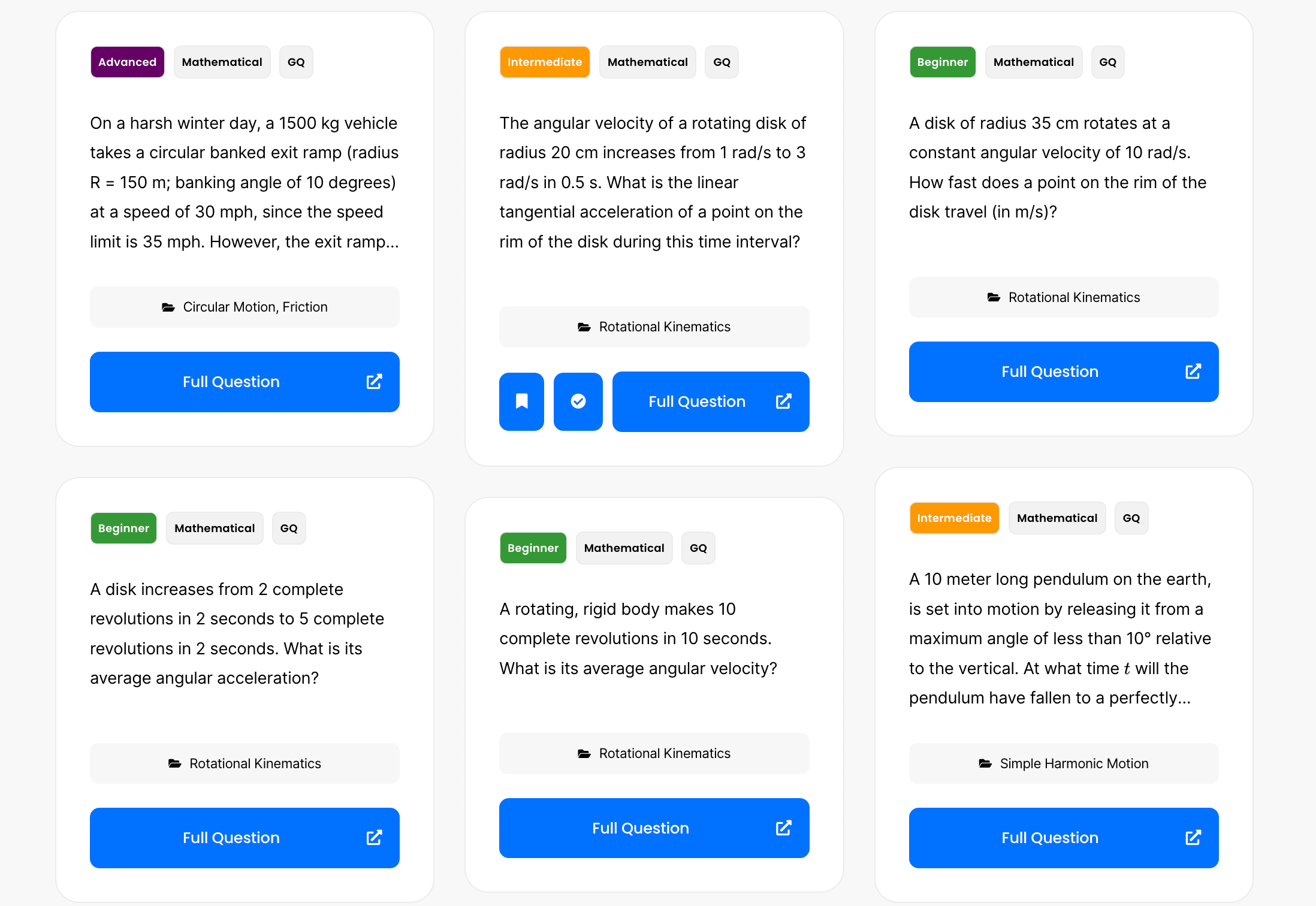In a carbonated drink dispenser, bubbles flow through a horizontal tube that gradually narrows in diameter. Assuming the change in height is negligible, which of the following best describes how the bubbles behave as they move from the wider section of the tube to the narrower section?
A block of weight \( W \) is pulled along a horizontal surface at constant speed by a force \( F \), which acts at an angle of \( \theta \) with the horizontal. The normal force exerted on the block by the surface has magnitude:
The first \(10 \, \text{meters}\) of a \(100 \, \text{meter}\) dash are covered in \(2 \, \text{seconds}\) by a sprinter who starts from rest and accelerates with a constant acceleration. The remaining \(90 \, \text{meters}\) are run with the same velocity the sprinter had after \(2 \, \text{seconds}\).
Ball \(A\) of mass \(m\) is dropped from a building of height \(H\). Ball \(B\) of mass \(1.7 \, \text{m}\) is dropped from a building of height \(1.7H\). Using energy, what the ratio of \(v_A\) to \(v_B\) (final velocity of ball \(A\) to final velocity of ball \(B\)). Air resistance is negligible.
A 6.0-cm-diameter gear rotates with angular velocity \( \omega = \left(20-\frac {1}{2} t^2 \right) \, \text {rad/s} \), where \(t\) is in seconds. At \(t = 4.0 \, \text{s}\), what are
A car starts from rest and accelerates uniformly over a time of 5 seconds for a distance of 100 m. Determine the acceleration of the car.
The exoplanet HD 69830b has a mass 10 times that of the Earth and a radius 5 times that of the Earth. The value of g on HD 69830b is most nearly
| Speed | \( 10 \, \mathrm{m/s} \) | \( 20 \, \mathrm{m/s} \) | \( 30 \, \mathrm{m/s} \) |
| Braking Distance | \( 6.1 \, \mathrm{m} \) | \( 23.9 \, \mathrm{m} \) | \( 53.5 \, \mathrm{m} \) |
A car of mass \( 1500 \, \mathrm{kg} \) is traveling at one of the speeds listed when the brakes are first applied. Using the data above, what is the magnitude of the average braking force required to stop the car?
A solid sphere, solid cylinder, and a hollow pipe all have equal masses and radii. If the three of them are released simultaneously from the top of an inclined plane and do not slip, which one will reach the bottom first?
A 1100 kg car accelerates from 32 m/s to 8.0 m/s in 4.0 sec. What amount of force was needed to slow it down?
On a distant planet, golf is just as popular as it is on earth. A golfer tees off and drives the ball 3.5 times as far as he would have on earth, given the same initial velocities on both planets. The ball is launched at a speed of 45 m/s at an angle of 29° above the horizontal. When the ball lands, it is at the same level as the tee. On the distant planet find:
A person is standing on a railroad station platform when a high-speed train passes by. The person will tend to be
By continuing you (1) agree to our Terms of Sale and Terms of Use and (2) consent to sharing your IP and browser information used by this site’s security protocols as outlined in our Privacy Policy.
Quick Start Guide
AP physics 1, AP C, honors and advanced physics students.
Quickly filter questions by units and more.


Here’s guide to using 5 UBQ filters.
GQ = general question, MCQ = multiple choice, FRQ = free response.


Click the check or bookmark button.
Now you’ll be able to see completed or bookmarked questions at a glance!
Answer keys, personalized for you.

Phy will be responsible for grading your FRQs and GQs.
No more copy and pasting. Just solve and snap.
Questions for Mastery

By continuing you agree to nerd-notes.com Terms of Service, Privacy Policy, and our usage of user data.